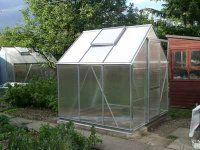Earlier harvest, extended season, and increased varietal choice are some of the reasons you may want to start your ownvegetabletransplants indoors. Although many vegetable plants are available at garden centers each spring, it is sometimes difficult to find the exact variety that you're looking for. By starting your own transplants, you can plan for a supply of what you want when you want it.
Your first consideration is when to plant. If you plant too early, seedlings will become weak and leggy, which is not much of a start for a productive garden. Use the average date of last frost as a reference point for when to plant each vegetable in the garden. Remember, some vegetables will be planted in the garden several weeks before this date, others near or on this date, and yet others a few weeks after this date. From the planting date, count back six to eight weeks; as a general rule, you can sow seeds indoors on this date. Large-seeded varieties, such as squash andwatermelon, should be started only four weeks prior to garden planting.
Advertisement



